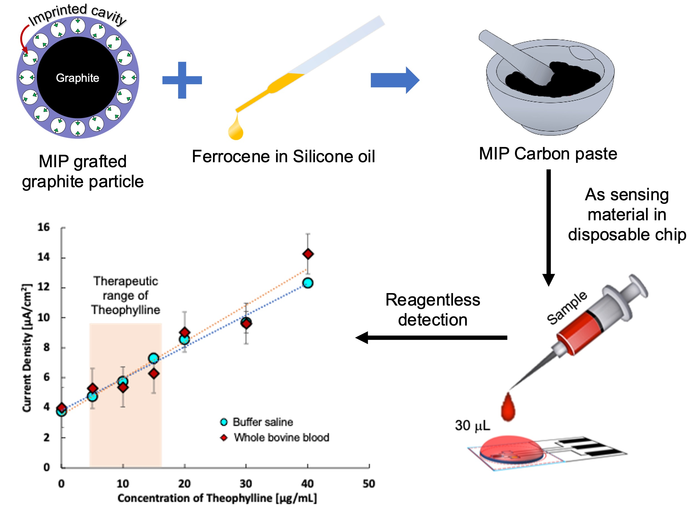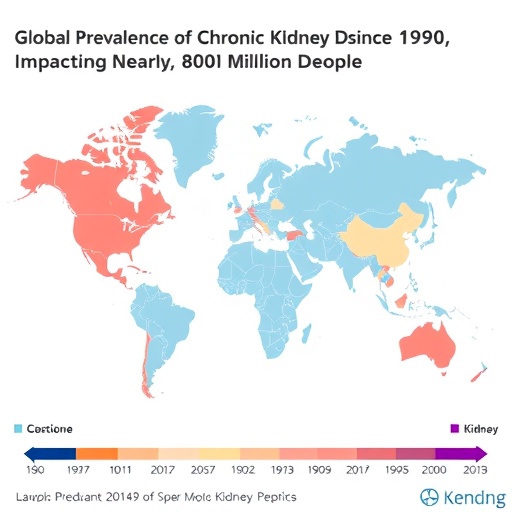Theophylline or THO is a natural organic compound whose molecular structure is very similar to that of caffeine present in coffee and cacao. Over the years, due to its therapeutic properties, THO has become one of the most widely studied xanthine group derivates. THO is used to dilate respiratory passages in people having difficulty breathing, and as a muscle relaxant, anti-asthmatic, and diuretic (drugs used to increase urine production and reduce blood pressure). It is also known to have anti-inflammatory and anti-tumor properties, and can regulate our immune responses too.

Credit: Yasuo Yoshimi from SIT, Japan
Theophylline or THO is a natural organic compound whose molecular structure is very similar to that of caffeine present in coffee and cacao. Over the years, due to its therapeutic properties, THO has become one of the most widely studied xanthine group derivates. THO is used to dilate respiratory passages in people having difficulty breathing, and as a muscle relaxant, anti-asthmatic, and diuretic (drugs used to increase urine production and reduce blood pressure). It is also known to have anti-inflammatory and anti-tumor properties, and can regulate our immune responses too.
While THO is beneficial in treating a number of conditions, the drug has a very narrow therapeutic window. This means it can create adverse effects if administered beyond a certain limit (and that limit can be quite easily reached). An accidental or deliberate overdose can be highly toxic and lead to problems such as seizures, rapid heartbeats, excitation of the nervous system, or even death. This makes close monitoring of THO levels during therapy extremely crucial. In a recent breakthrough article—which was published in Volume 27, Issue 8 of Molecules, made available online on 11 April 2022—a team of researchers from Shibaura Institute of Technology (SIT) in Japan describe how they developed a low cost and rapid electrochemical sensor for THO detection. Elaborating on their motivation for the study, Prof. Yasuo Yoshimi (who is the corresponding author of the article) says, “Conventional drug monitoring relies on laboratories outside the hospital to analyze the molecular levels of drugs in blood. Our reagentless sensing tool can easily detect THO directly from whole blood in less than 3 seconds, just like a glucose sensor.” This article is a part of the journal’s special issue titled “Molecularly Imprinted Polymers: Impactful Technology vs. Academic Exercise.”
Therapeutic drug monitoring is essential for optimizing the effects of treatments such as chemotherapy, which require strict control over the drug’s concentration in the patient’s blood to prevent severe side effects. However, most monitoring techniques are often time-consuming and demand complex procedures that can only be carried out by an expert. The same goes for THO detection methods.
To alleviate these problems, researchers over the years have developed low-cost electrochemical methods that are simple, highly sensitive, and rapid. One of these, a class of electrochemical tools that has recently gained momentum, is molecularly imprinted polymers (MIPs). These tools have tailor-made molecular cavities that can recognize and bind to specific target molecules, just like receptors in our own body would. Their ability to do so is being widely used in several applications, including drug detection.
In this study, the team of scientists developed a disposable, paper-based THO sensor consisting of an electrode made of molecularly imprinted graphite. Since MIPs are designed using the target molecule as a template, the team used THO as a template when developing the sensor’s carbon-based electrode paste. The synthesized paste was then loaded onto a printed sensor chip and its THO detection abilities were tested.
The sensor was found to be highly sensitive (meaning it could detect even small amounts of THO) and showed great selectivity towards the drug. In fact, the sensor could identify THO even in samples with THO concentrations as low as 2.5 µg/mL ( µg=microgram, i.e., 1/1000 of a milligram). And what’s more, this sensor needs only 3 seconds to detect THO! It could do so even in whole bovine blood.
This portable, low-cost, reliable, and rapid sensor has long-term stability and can be used for the real-time detection of drugs like THO without us depending on sophisticated equipment. Furthermore, the fabrication strategy provided in this study can be used to develop efficient electrochemical sensors for various other clinical interventions. Assistant Prof. Aaryashree (who is the first author of the article) concludes, “Existing methods for the analysis of the drugs in blood are expensive and need specialized equipment. This can be a problem for developing countries dealing with a lack of resources and technicians. The paper-based sensor that we have developed is not only easy to use but also economical and can reduce the burden of drug analysis in developing countries. Further, its prototype can be used to develop a bedside therapeutic drug monitoring system, which will alert us of any overdose, avoiding side effects in patients taking these drugs,”. Indeed, a useful innovation!
***
Reference
DOI: https://doi.org/10.3390/molecules27082456
About Shibaura Institute of Technology (SIT), Japan
Shibaura Institute of Technology (SIT) is a private university with campuses in Tokyo and Saitama. Since the establishment of its predecessor, Tokyo Higher School of Industry and Commerce, in 1927, it has maintained “learning through practice” as its philosophy in the education of engineers. SIT was the only private science and engineering university selected for the Top Global University Project sponsored by the Ministry of Education, Culture, Sports, Science and Technology and will receive support from the ministry for 10 years starting from the 2014 academic year. Its motto, “Nurturing engineers who learn from society and contribute to society,” reflects its mission of fostering scientists and engineers who can contribute to the sustainable growth of the world by exposing its over 8,000 students to culturally diverse environments, where they learn to cope, collaborate, and relate with fellow students from around the world.
Website: https://www.shibaura-it.ac.jp/en/
About Professor Yasuo Yoshimi from SIT, Japan
Dr. Yasuo Yoshimi is a Professor at the Department of Applied Chemistry of the College of Engineering at SIT. He received his Ph.D. in chemical engineering from Waseda University. He is associated with the functional control systems at SIT where Dr. Yoshimi and his team develop biosensors and imaging probes made of synthetic receptors by the molecular imprinting method. His other fields of interest include therapeutic drug monitoring, and neuroscience.
About Professor Emeritus Tomoji Ohishi from SIT, Japan
Dr. Tomoji Ohishi is a Professor Emeritus at the Department of Applied Chemistry in the College of Engineering at SIT. His research is focused on applications of inorganic-organic hybrid materials and functional thin films.
About Assistant Professor Aaryashree from SIT, Japan
Dr. Aaryashree is an Assistant Professor in the Innovative Global Program at SIT, with a Ph.D. in electrical engineering from the Indian Institute of Technology, Indore, India. Her research is focused on the development of biosensors using molecularly imprinted polymers for drug detection and also for food sensing.
Funding Information
This study is supported in part by the Adaptable and Seamless Technology Transfer Program through Target-driven R&D (A-STEP) of the Japan Science and Technology Agency (JST): Grant Number JPMJTM19 BU.
Journal
Molecules
DOI
10.3390/molecules27082456
Method of Research
Experimental study
Subject of Research
Animal tissue samples
Article Title
A Disposable Sensor Chip Using a Paste Electrode with Surface-Imprinted Graphite Particles for Rapid and Reagentless Monitoring of Theophylline
Article Publication Date
11-Apr-2022
COI Statement
There is no conflict of interest to declare




